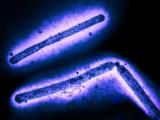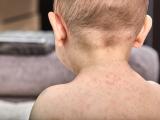Apr 12, 2013 (CIDRAP News) – A new analysis of H7N9 genetic sequences from the first Chinese patients infected with the virus and from poultry markets found more signals that the virus can attach and replicate efficiently in the airways of humans and other mammals, raising concerns about the virus's pandemic potential.
The new findings, published late yesterday in Eurosurveillance, are the first detailed comparison of both the human and market sequences. Results are similar to the genetic details of samples from the first three cases reported by Chinese scientists yesterday in the New England Journal of Medicine.
The new results also affirm early observations from some experts that the novel virus has adapted to infect mammals, yielding more information that health officials need to gauge the pandemic threat from the new virus.
The research team from Japan includes Yoshihiro Kawaoka, DVM, PhD, who heads a group at the University of Wisconsin that has done extensive genetic studies on the H5N1 virus, and Masato Tashiro, MD, PhD, director of the World Health Organization Collaborating Center for Reference and Research on Influenza at Japan's National Institute of Infectious Diseases in Tokyo.
Their look at sequences from influenza databases included human samples from the first two patients from Shanghai, as well as from a woman from Anhui province and a man from Hangzhou province. All of the patients died.
Samples from a market in Shanghai include isolates from a pigeon, a chicken, and an environmental sample.
Phylogenetic analysis of the four human samples suggest they have a common ancestor, with the hemagglutinin (HA) gene part of the Eurasian avian influenza lineage and closely resembling HA genes of low-pathogenic H7N3 viruses detected in 2011 in Zhejiang province, south of Shanghai. The group reported that the neuraminidase (NA) gene closely resembles a low-pathogenic H11N9 virus found in the Czech Republic in 2010.
Internal genes of the H7N9 virus were closely related to H9N2 avian flu viruses that recently circulated in poultry in Shanghai, as well as Zhejiang and Jiangsu provinces, according to the report. Researchers said the findings strongly suggest that the new viruses are reassortants that got their HA and NA genes (the H7 and N9) from avian influenza viruses and the rest of their genes from recent H9N2 poultry viruses.
When they compared the nucleotides from the four human specimens, they found that one of the Shanghai samples and the ones from Anhui and Hangzhou were 99% similar, despite the fact that they came from cities that were several hundred kilometers apart. They found differences between the two Shanghai samples and noted other patterns with the human and market samples that suggest five of the viruses came from a closely related infection source, while one of the Shanghai samples and the one from the pigeon came from different sources.
The Japan group's findings appear to echo the report from Chinese researchers yesterday that there have been at least two introductions into humans.
The Japanese researchers also detected mutations increase binding to human receptors, a key marker health officials use to gauge the infectivity of new flu viruses. They found that the two Shanghai strains and the Anhui strain had mutations that increase the binding of H5 and N7 viruses to human-type receptors.
One was the Q226L mutation, also flagged by Chinese researchers yesterday. It has been linked to the spread of respiratory droplets in ferrets and was a finding in two controversial studies—one by Kawaoka's group—in 2012 involving lab-modified H5N1 strains.
"The finding of mammalian-adapting mutations in the RBS [receptor-binding site] of these novel viruses is cause for concern," the investigators wrote.
The isolate from the Hangzhou patient had a genetic marker (isoleucine at position 226) found in seasonal H3N2 flu viruses.
All seven of the viruses had an HA substitution seen in other recently circulating H7 viruses that has been linked to increased binding to human-type receptors, according to the report.
In the polymerase PB2 protein, they found a marker in the human samples that is essential for efficient replication and has been seen in H5N1 viruses and in an H7N7 sample that was isolated from a fatal case in the Netherlands in 2003.
When they looked for mutations that influence sensitivity to antiviral medications, they projected that all of the human H7N9 samples should be sensitive to neuraminidase inhibitors, except for one of the Shanghai samples. The exception has a R294K mutation in the NA protein that has been linked to resistance in N2 and N9 flu subtypes, which is concerning, the team wrote.
Neuraminidase inhibitors are the most common types of flu antiviral drugs prescribed and include oseltamivir (Tamflu) and zanamivir (Relenza).
Researchers also found some virulence markers, including one at the NA stalk and the other in the PB1-F2 protein; however, they said the human sequences so far lack the N66S mutation that was associated with increased pathogenicity of the 1918 pandemic virus and the H5N1 virus.
The mutation they saw at the NA stalk can occur when the virus adapts to terrestrial birds, which suggests the novel H7N9 virus or their ancestors may have circulated in terrestrial birds before infecting humans. So far, the host of the virus has not been identified, and health officials are considering a range of animals.
The H7N9 virus sequences also showed an NS1 protein sequence pattern that might attenuate the viruses in mammals.
Taken together, the findings present a somewhat clearer picture of the threat the new virus could pose, the group concluded.
"These viruses possess several characteristic features of mammalian influenza viruses, which are likely to contribute to their ability to infect humans and raise concerns regarding their pandemic potential," they wrote.
Kageyama T, Fujisaki S, Takashita E, at al. Genetic analysis of novel avian influenza A (H7N9) influenza viruses isolated from patients in China, February to April 2013. Eurosurveill 2013 Apr 11;18(15) [Full text]
See also:
Apr 11 CIDRAP News story "CDC airs H7N9 worries as report profiles early victims"

















